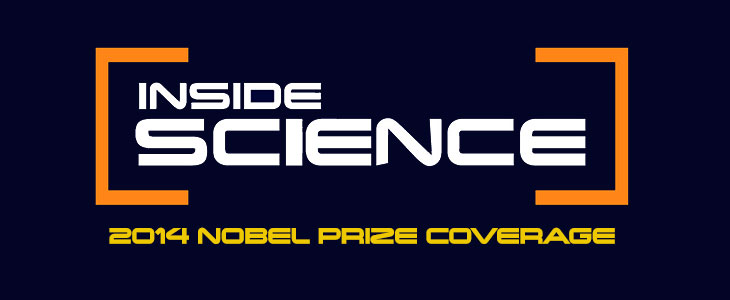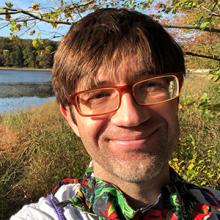Quotes, Notes And Links About The 2014 Physics Nobel Prize

(Inside Science) -- This morning the Nobel Prize in physics was awarded to three scientists, Isamu Akasaki, Hiroshi Amano and Shuji Nakamura, for developing blue light-emitting diodes. The discoveries made many new devices possible, including the development of bright white lights that use little electricity and emit little heat, in contrast to traditional light bulbs.
The Nobel committee explained that these discoveries have an environmental and humanitarian application.
Explicit statement from #NobelPrize2014 committee that this prize was about living up to Nobel’s dream of “betterment of [hu]mankind."
— Katie Mack (@AstroKatie) October 7, 2014
For the second day in a row, a new Nobel laureate was on an airplane as the announcement happened.
Prof. Amano was on a plane to France when he recieved the call about the Nobel Prize. Sound familiar? #nobelprize2014 #Physiologynobel
— InsideScience - ISNS (@InsideScience) October 7, 2014
Here are a couple of other general items about the prize.
First is a note that our very own Ben P. Stein, who wrote our news story on today's physics prize, correctly predicted one of the winners, Shuji Nakamura, last week in this blog post. Here's his news story on today's award.
Here's a neat article about Staffan Normark, permanent secretary of the Royal Swedish Academy of Sciences, and what it's like to call new Nobel laureates with the good news. It's from the magazine Intelligent Life.
Here's an excerpt from the piece that quotes Paul Nurse, who won the prize for physiology or medicine in 2001:
"I went back into the room I’d just left. I said, 'Do excuse me, I have to go now. I think I’ve won the Nobel prize.'"
Here is a nice, tidy podcast from Scientific American's 60-Second Science.
Now, here are some links and quotes about one of the winners, Shuji Nakamura.
First, here's a passage from a 2007 book review, published in the magazine IEEE Spectrum, about Nakamura and his discoveries in the LED industry he helped build.
Thomas Alva Edison had plenty of help when he invented the first practical incandescent light bulb more than 125 years ago. By contrast, Shuji Nakamura was working virtually alone at a small, obscure Japanese company in 1992 when he developed the bright blue light-emitting diode, or LED, that now promises to supplant that bulb in many applications. Since then, Nakamura has become a celebrity in Japan, a litigant in a high-profile lawsuit, a California resident, the winner of the 2006 Millennium Technology Prize, and a wealthy man.
Now, after the announcement this morning in Sweden, he can now be called a Nobel laureate.
This four-part series from University of California TV does a great job of explaining Nakamura's background, the development of blue LEDs, and the greater context that they fit into in the world. Part two covers Nakamura's background, and part three goes deep into the science of LEDs.
A material called gallium nitride proved to be the key to making blue LEDs. Many other researchers had dabbled with it, but it was difficult to develop high-quality layers of the stuff. So many abandoned it.
Nakamura, in this video of a 2007 speech he gave in Finland, explains one of the reasons why he, by following his own path, was able to create a blue LED, while others weren't.
Here's a partial transcript of what he said at that podium, while moving his arms to show two distinct paths:
"Everybody wants to go this route. Nobody wants to go this route. If you want to go a different route, you need something very in mind. ...You need a very brave, brave heart to go a different route. If everybody wants to go this way, it's very hard to take this road."
Now, LEDs that descended from his work are all over all sorts of roads (and everywhere else, for that matter), from car interiors, traffic signals and street lamps to cell phones, TVs and outdoor video displays, among other places.
Here's a 2007 story about Nakamura from Time Magazine. It details the years of research and dead ends that nearly ended his research at Nichia Chemical Industries before he was successful.
At the time of his breakthrough, Nakamura was an unknown engineer without a Ph.D. working for a tiny Japanese electronics company on Shikoku Island. His colleagues would tell him, "'You should quit. You wasted all our research money for 10 years,'" Nakamura remembers. "That just pissed me off. So I figured, if I'm going to quit anyway, I might as well do the research I've always wanted to do."
He did, and soon followed up the blue LED with the first bright green and white LEDs.
Here's an interview Nakamura gave to BoingBoing in 2009, explaining how he became interested in blue LEDs.
Q: What got you interested in LEDs?
A: I joined Nichia Corporation in 1979, at the age of 24. For 10 years, we just did red LEDs, but the biggest problem in the field was that there was no blue or green. To make anything, you need the three primary colors. Red was easier to make because gallium arsenide was readily available, but nobody had figured out how to make blue. There were two materials being researched at the time for blue. Everyone thought zinc selenide was better, and only maybe 6 out of 1000 researchers were looking at gallium nitride. It has lots of crystal defects, and many thought it would be too difficult at the time.
It's also worth mentioning that after he moved to the U.S. in 1999, Nakamura had a legal battle over patents with Nichia, his former employer, which was ultimately settled after he was awarded several million dollars, as detailed here by Bloomberg News.
Unfortunately, I haven't been able to find much in English about Hiroshi Amano, who worked with Isamu Akasaki at Nagoya University at the time of the prize-winning discoveries, and continues to work there now.
Here are a couple of interesting items on Akasaki, who is now at both Nagoya University and Meijo University (which is also in the city of Nagoya).
This is a nice video biography of Akasaki, produced in honor of his win of the Kyoto Prize in Advanced Technology in 2009.
In the video he offers the following advice, which seems good for scientists and others alike, "Hold on to your dream. Don't be afraid to make mistakes -- experience is the best teacher."
Here is a short written biography of Akasaki from IEEE, an association of electrical engineers.
Thanks to everyone for following Inside Science's coverage of the Nobel Prizes this week. We'll be back tomorrow for the chemistry award, so please come back to our home page.

